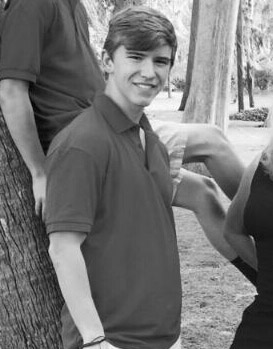By Jared Olson | gargoyle@flagler.edu
For the family of junior Yasmeen Anis, 9/11 was a day when the entire world seemed to pause.

Jared Olson
As with most American families, they knew the day the 19 Muslim extremists crashed two jumbo jets into the World Trade Center would irrevocably alter our society. But as a Muslim family, the attacks and subsequent “War on Terror” exposed them to a threat most Americans wouldn’t have to deal with: anti-Islamic discrimination, a pathogen which would infect our society with increasing virulence over the next 15 years, boiling to an all-time high in 2016.
Almost immediately after the attacks, more than a decade ago now, Anis’ parents began feeling the first ripples of Islamophobia. In the months following Sept. 2001, the couple—Sunni Muslims who immigrated to the United States from Pakistan and ran a gift shop in Kissimmee—experienced a stark decline in traffic at their business. People were suddenly suspicious of the middle-eastern looking couple—especially the mother, who wore the traditional Islamic hijab. Over the coming years, an alarming number of customers would begin avoiding them because of their religion.
Anis recalls how her father was glad to have put her through a private Islamic school, sheltered from religious bullying in public school systems. Her parents tried to isolate their kids from the poisonous rhetoric directed towards Muslims after 9/11, but doing so was exceedingly difficult. Even today, more than a decade since the attacks, her mother still can’t walk in public without making people uncomfortable.
Anis’ family is not alone in their experiences. There’s been an astronomical rise in the amount of Islamophobic hate-crimes. According to the Center for American-Islamic Relations (CAIR), the number of attacks against Muslims has increased 600 percent in the last year alone.
For Amal Soukarieh, a Lebanese-born, Saudi-educated Muslim who came to the United States a year ago, Islamophobia is a perplexing phenomena. A freshman at Flagler College, she has already caught whiffs of the anti-Islamic pathogen.
“When we first moved into our house, it was interesting, because our neighbor was a fervent anti-Muslim who used to protest at mosques,” she said.
To her, it’s strange to see the social stigma Americans place on women who opt to wear their hijabs publicly. And it’s strange for her to see how Americans perceive Muslims and middle easterners in general, for they are often mistakenly lumped into one, indistinguishable group–as an ignorant race of brutal tribesmen.
“In the Middle East, we grow up knowing about the whole world–Asia, Europe, Africa,” she said, recounting her cosmopolitan education. “Usually Westerners are not as informed about us as we are about them.”
Western ignorance about Middle Easterners, she says, is a part of a feedback loop: the more white Americans assume all Muslims are suicide bombers, and the more they are reinforced in this notion via the media and rumors, the more likely they are to discriminate against others in the first place.
I asked Amal about ISIS, the terrorist organization largely responsible for the negative image of Islam in recent years. Fringe groups like ISIS, acting since the late ’90s, were the ones that sparked Islamophobia, after all.
“It makes me want to cry,” she says. “They (groups like IS) are not motivated by political beliefs. They claim to be religious, but it’s only to gain power. It’s all about power for guys like them, nothing else.”
I asked Anis the same question.
“People always forget that Islam is the Arabic word for peace,” Anis said. “In the Quran, peace and love are emphasized. People need to stop portraying the whole religion based on the one bad apple.”
“We have a quote in Lebanon,” Amal interjects. “We always say that ‘They (the terrorists on 9/11) didn’t just hijack the planes. They hijacked the whole, entire religion.’ “



Be the first to comment on "Islamophobia on the rise in America"